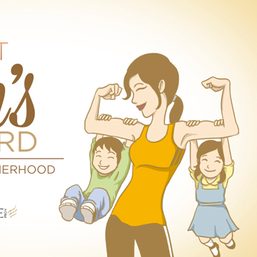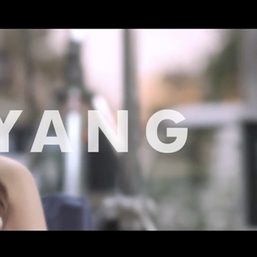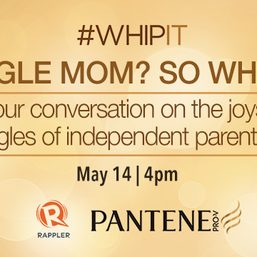SUMMARY
This is AI generated summarization, which may have errors. For context, always refer to the full article.
MANILA, Philippines — Racial discrimination is not a “loud” issue in our society, but it’s nonetheless serious. Women, in particular, are more vulnerable to it.
Our culture, as we know it today, is what anthropologists would call a “melting pot.” As a nation, we have a rich mix of ethnicities and traditions culled from our long colonial history and the increasing globalization of the Southeast Asian region. It’s visible in our customs and our daily multicultural exposure: from practicing Catholic customs, following American pop culture, eating ramen that foodies crave, to learning Korean makeup tutorials on YouTube, the country is not that isolated anymore.
So one might think that, in this context, our society would have an open-minded notion of beauty and attractiveness. But when the term “Half-Pinay” is used, it is typically taken to mean only one kind of mixed heritage: those with fair skin, light colored hair and eyes, or a towering stature. When it’s otherwise, we are surprised. People can’t help but stereotype – culturally.
And of course women are most affected by such inundations. Every day, we are exposed to glossies, billboards, TV commercials, and other forms of advertising that promote “white” as beautiful, and create impossible standards for the majority.
There are so many ways a Filipino can become a Filipino. But what happens to those who don’t fit into this mold?
We interviewed 5 Filipinas of different cultural backgrounds, just to get a clearer picture of how they contend with the expectations that society has towards their upbringing.
Here’s what we found out.
‘Chekwa’
Filipino Chinese, or Tsinoys, make up one of the largest non-indigenous ethnic groups in the Philippines. We talked with Anna Mae Yu Lamentillo, a communications consultant who works at the United Nations Development Programme. We also asked Irene Chia, a project coordinator for Libertas, an NGO that advocates for legal and political reform in the country. Both had their fair share of being exposed to unfortunate labels growing up as Filipinos with Chinese heritage.

Anna Mae recalls: “I was called many names from ‘wolverine’ to ‘intsekto‘. But at some point, I realized there was no point in dignifying the comments.” She is also part Spanish, which explains the unconventional references.
Irene had to endure the more typical kind of teasing. Since she looks more Chinese than Filipino, she gets mistaken for a Japanese or Korean. “When I was growing up, I would hear children and sometimes grown-ups say ‘tsing tsong tsang’ [mimicking how Chinese people speak] when they see me or they would say ‘Intsik, intsik!’ or ‘Chekwa.’” Irene is also a Tai Chi and Qigong instructor, so people would further set her apart with typical attributions to most Chinese in the country. “Mayaman, magaling sa pera, magaling sa math (rich, good with money, good at math),” she points out.
Yet these ladies hardly let the labels get to them. “I accept who I am. I am proud of my heritage and I am confident of my skills,” Irene asserts.

“Labels or names are only effective when you give it value or importance. I never did,” adds Anna Mae.
Irene and Anna Mae both work in industries where gender equality and cultural tolerance is encouraged, so they’re in a “better” position, although they both recognize that other women may not be experiencing the same.
‘Too Filipino’
Monika Sta. Maria, part Filipina and Malaysian, works as a model.
Growing up, she didn’t experience any particular form of discrimination. But in one recent project in Singapore, she recalls how her agent encouraged her to tweak her accent to make it “less Pinoy.”
“They were saying that they don’t want the clients stereotyping that I was Filipino,” she recalls. “I felt a bit disturbed because I am really proud to be a Filipina and I didn’t think there was any problem with clients knowing I’m Filipina.”
Looks-wise, perhaps Monika didn’t have to negotiate that much since Malaysians and Filipinos tend to look the same. She feels luckier yet she also tries to challenge herself when the issue of culture comes up.

“I face daily life with more questions towards tradition and beliefs that are around me,” Monika declares. “I don’t just follow, like, ‘Okay, after you graduate college, you have to start immediately in the corporate world and find a job’ just like most of my friends have done.” She grew up with cousins in Malaysia and Germany who were allowed to have more freedom in their life goals. “So I am not afraid to explore while I’m young, keeping in mind to search what I would love to do as a living.”
‘Bumbay’
Jasmine Shewakramani, a social media manager, and Sharmila Parmanand, the director of policy and advocacy at the NGO Visayan Forum, are Indians who were born and raised in the Philippines. They had similar experiences existing in multicultural Philippines.
“Everyone assumes Indians eat spicy food, lack personal hygiene and the like,” Jasmine says. “I hate this because it presents such a shallow understanding of how we are. I mean, I know Filipinos who like spicy food or may have questionable [hygiene] habits but I don’t start stereotyping them.”

“Some people I have encountered seem to be under the impression that the Indian diaspora based here is fairly ethnocentric and less likely to mingle with non-Indians,” Sharmila says. “It’s definitely not true for me, but I can see why many are left with that impression about other Indian families.”
About being called “Bumbay,” Jasmine adds, “In all fairness, though, it wasn’t intended to be derogatory. I think over the years, it has become one. I don’t like the name because it’s not even a proper term. I am an Indian with a very Filipino heart. There is no such thing as Bumbay in the world. It refers to the state where the first Indians came from (Bombay, now called Mumbai). I would rather be called Indian.”
Jasmine went to an all-girl Catholic school, and she admits that growing up with “all-Filipinos” took its toll on her self-esteem. “For the longest time, I never saw myself as beautiful because I didn’t look like everyone else—fair-skinned, straight-haired, etc. Adding to the fact that those were the awkward years, so I really was a late bloomer, and it took a while for me to grow into my confidence and my looks.”
“These are just small examples. Obviously, over the years, you learn how to ignore the ignorant,” Jasmine says further. “Thankfully, I have good friends who treat me like a person and when they do ask questions – which I don’t mind answering – they’re always tactful.”
‘I am richer’
Did they ever consider their mixed heritage as an advantage? Most of the women acknowledge that their cultural background has made their lives richer.
Jasmine agrees that having a multicultural background increases one’s perspective. “For someone who has grown up so immersed in two different cultures, two different religions even, I used to have identity issues because I never knew where I belonged. Then as I grew up, I slowly realized that there are so many advantages in growing up with the thinking of belonging to something bigger. You can bring so much more to the table. Sometimes it’s not about belonging anymore, because fitting in is overrated. I like to think of myself as a citizen of the world, and I believe my open-mindedness is one of my best qualities.”
Monika learned a lot from the stark difference between two cultures. “Women have their own roles in society traditionally, [with] the Philippines having the dominating Christian culture and Malaysia having the dominating Muslim culture. But of course times have changed. I am most proud of the fact that I get exposed to the different cultures and get to live it. So I am just myself.”
For Anna Mae, it’s neither. “There is no advantage or disadvantage. The distinction might as well be superficial. I dream of one day waking up without the concept of ‘Filipino Time’, ‘Italian Punctuality’ or ‘French Lovers’.”
It’s time to put an end to distinguishing people by their race. Anna Mae adds, “Up to some extent, the idea of a mixed cultural heritage is fictitious considering our history as a society. It is time to ask, what do we mean when we say 100% Pinoy or 100% Chinese or 100% American?”
‘I am myself’
So what’s their message to women who face similar kinds of discrimination?
Irene says, “Assert your rights as a woman and as a human being. Everyone deserves to be treated with respect and dignity, regardless of the color of one’s skin.”
Jasmine urges other women to rise above the prejudice. “You need not stoop down to the level of those who discriminate or belittle you just because of that. Use what you can in making a difference about being different.”
Anna Mae encourages. “Fight not just for yourself but [also] for others who, like you, seek empowerment and equality.”

Sharmila believes that it’s generally harder to correct bias than we think. “In the real world, it is probably a constant process of negotiation. I find that it’s easier to proceed when you assume the best of the people who don’t see things your way. I would suggest reaching out first and breaking the ice. It normally becomes so much easier from there.”
These women are educated and enlightened enough to see beyond what others judge them to be. But not all women are as fortunate. In our society, it’s easy to dismiss racial prejudice as mere words. We often see it in the context of jokes or shallow misunderstanding. But the roots of bias run deep. It mirrors the other kinds of assumptions we have, not just about culture, but also about gender, stature, and identity.
As Sharmila puts it, “Each person represents a unique intersection of so many variables – class, race, religion, gender, their own life histories, etc., and it makes more sense to engage with people as individuals rather than making generalizations on the basis of race. These generalizations are usually flawed and you risk missing out on real friendships or partnerships if you write people off based on these generalizations.”
So the next time you think you see a “Bumbay” or “Chekwa,” check yourself. There is simply no excuse for bigotry of labeling any longer. And if you are in the same boat as these 4 women, learn to speak up. It’s your right.
There’s a difference between standing out and being singled out. Decide to be empowered. — Rappler.com
Add a comment
How does this make you feel?









There are no comments yet. Add your comment to start the conversation.